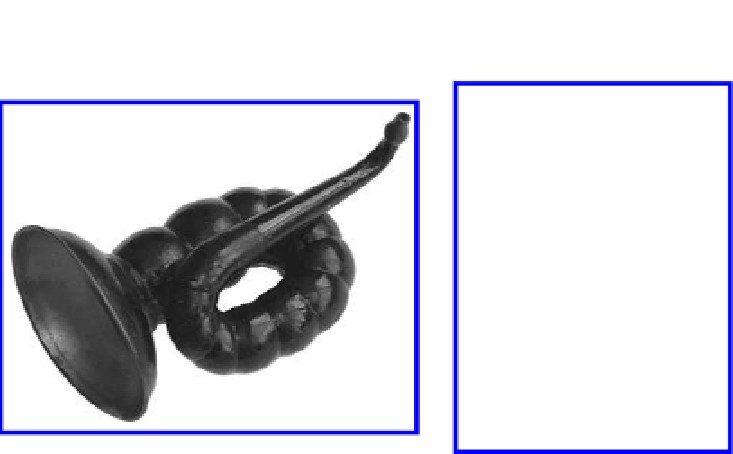Biomedical Engineering Reference
In-Depth Information
Figure 6.2.
(Left) Auditory amplification as passive ear-trumpet type. Image courtesy
of Alex Peck Medical Antiques
c
Alex Peck Medical Antiques 2010. All rights reserved.
(Right) Active cochlear implant system.
received by both ears and is according to Blauert (1996), the far most important
physical parameters of spatial hearing. The concept of spatial hearing embraces
the relationships between locations of auditory events in conjunction with other
parameters, e.g., time, space, and particularly those of specific sound events, as
well as others such as those related to the physiology of the brain.
The auditory perception is an excellent example, where active technology
solutions may create new possibilities for people with impaired hearing or simply
have problems to participate in ordinary discussions. It also demands technology
development to design modern audio directed devices that may separate ordinary
speech from unwanted disturbances, i.e., surrounding noise.
6.2.2 Visual-Based Physical Sensors
The visual perception ability is, as stated earlier, nowadays an increased prob-
lem for a huge part of the population. The inability to visually sense the environ-
ment is a huge limitation that radically limits people's perception and restricts their
activities. An eye correction, by external spectacles as shown in Fig. 6.3, is indeed
a powerful complement that have helped many individuals for generations to ad-
just the defect of the visual acuity and by a moderate addition improve the result
by providing a more effective perception. In the industry, automatically darkened
glass mounted in welding helmets is frequently used to safely protect the oper-
ator's eyes during the welding process. Probably we will experience an emerg-
ing interest in new optical functional materials and structures for LCD-technology.
Perhaps the technology will be implemented in ordinary sunglasses for elderly
people, having a general problem with a strong sunlight that may automatically
adjust their spectacles to the users performance when moving from indoor to out-
door in a smooth transitionadapted to the individual's preferences.








Search WWH ::

Custom Search